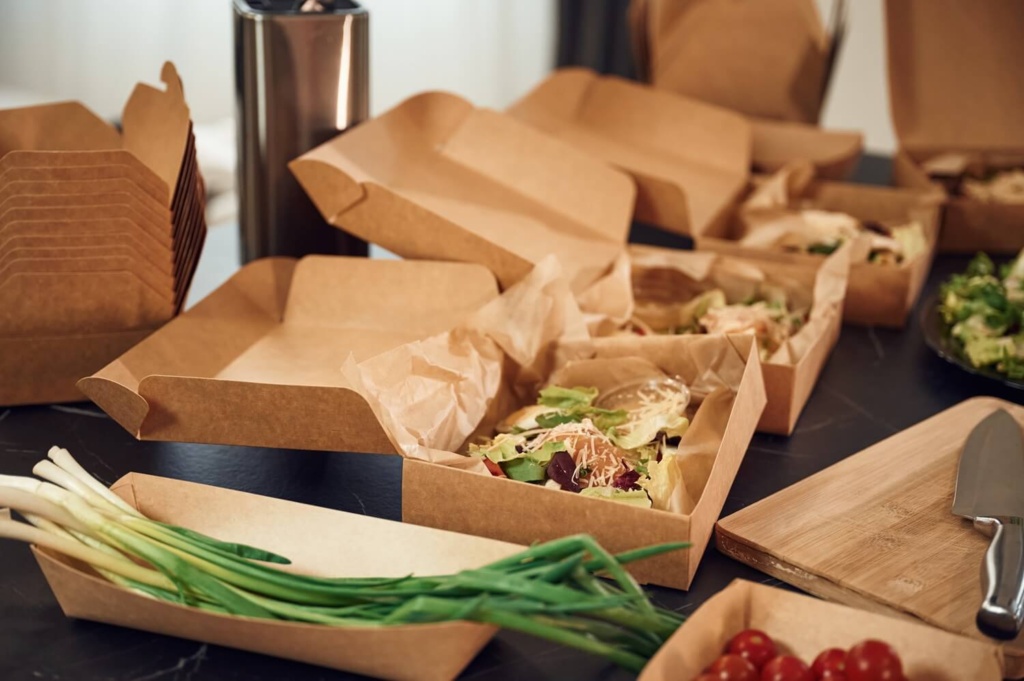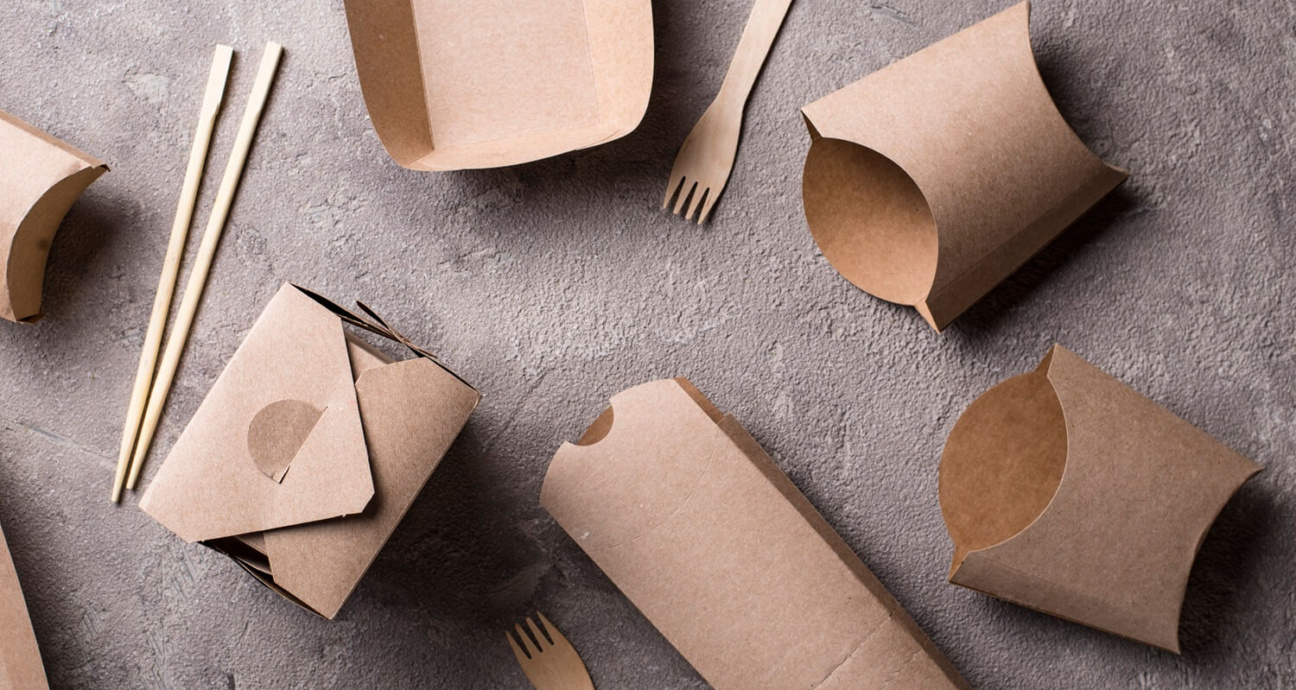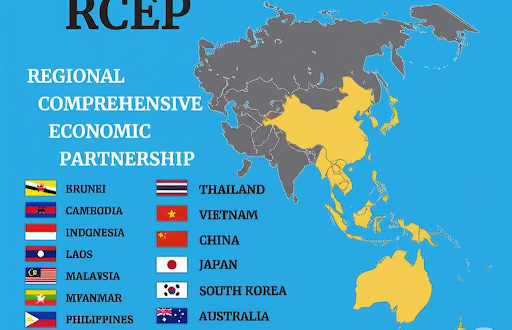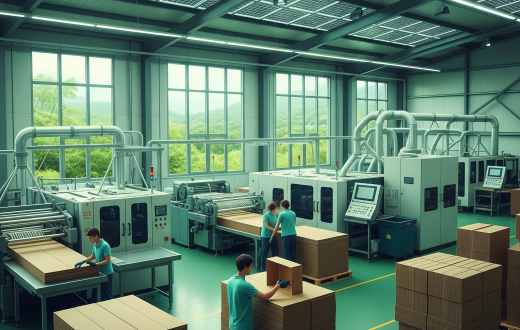Paper-based food packaging offers a wide array of options, each designed to meet specific needs in the food industry. From traditional paperboard to innovative paper-based materials, these packaging solutions vary in composition, thickness, and functionality. However, the critical question remains: are they safe for use?
Let’s delve into the various types of paper packaging for food and explore their safety considerations.
Exploring the Sustainability and Safety of Paper-Based Food Packaging
Before delving into the types of paper used in food packaging, it’s essential to understand why paper packaging is a preferred choice for many in the food industry. Paper packaging offers several advantages, including its biodegradability, recyclability, and renewable nature, making it an eco-friendly option. Additionally, paper-based materials provide excellent printability, allowing for attractive branding and product information display.
Furthermore, paper packaging is lightweight, cost-effective, and versatile, making it suitable for various food products. Now, let’s explore the different types of paper commonly used in food packaging and assess their safety.
The Types of Paper Used for Food Packaging
Paper used for food packaging comes in various types and materials, each suited for different purposes and products. Common types include:

1. Kraft Paper
Known for its strength and durability, Kraft paper is commonly used for packaging dry foods like grains, nuts, and snacks.
Kraft paper, renowned for its strength and eco-friendliness, is a staple in food packaging. Unbleached and sturdy, it withstands the rigors of transportation while remaining biodegradable and recyclable. Its versatility suits various food types, from sandwiches to dry goods, and its grease-resistant options accommodate oily or moist foods like deli meats and baked goods.
Customizable for branding, it enhances product presentation and consumer recognition. With these qualities, Kraft paper emerges as a reliable, sustainable, and visually appealing choice for food packaging needs, embodying both durability and environmental responsibility in a competitive market.
2. SBS Board
Solid Bleached Sulfate (SBS) board is a high-quality paperboard often used for packaging frozen foods, confectionery, and bakery items due to its excellent printing surface.
SBS (Solid Bleached Sulfate) board is a premium material for food packaging due to its superior strength, brightness, and printability. Made from bleached wood pulp, it offers a pristine white surface ideal for vibrant graphics and branding. Its rigidity ensures product protection during transit, making it suitable for a wide range of food items, including frozen foods, confectionery, and pharmaceuticals.
SBS board’s excellent barrier properties safeguard against moisture and grease, preserving product freshness. With its versatility and visual appeal, SBS board is a preferred choice for premium food packaging applications, emphasizing both quality and aesthetics in the marketplace.
3. C1S Board
Coated One Side (C1S) board is coated on one side with a layer of clay, making it ideal for packaging products requiring high-quality printing on one side, such as candy bars and frozen foods.
C1S (Coated One Side) board is a versatile material used in food packaging for its excellent printability and strength. With a smooth, glossy coating on one side, it offers a pristine surface for high-quality printing and branding, making it ideal for attractive packaging designs. The uncoated side provides a natural look and feel, suitable for direct contact with food.
C1S board’s rigidity ensures product protection during handling and transit, making it suitable for a variety of food products, including dry goods, snacks, and bakery items. Its combination of visual appeal and durability makes C1S board a popular choice for food packaging applications.
4. Folding Box Board (FBB)
Folding Box Board (FBB) is a heavyweight paperboard commonly used in food packaging due to its strength and versatility. Composed of multiple layers, including mechanical and chemical pulp, FBB offers excellent stiffness and durability, making it suitable for packaging various food items. Its smooth surface allows for high-quality printing and branding, enhancing product presentation on retail shelves.
FBB is commonly used for packaging dry foods, confectionery, frozen foods, and other consumer goods. Its ability to withstand moisture and grease, along with its eco-friendly properties, makes FBB a preferred choice for sustainable and attractive food packaging solutions.
5. Greaseproof Paper
Designed to resist grease and oil, greaseproof paper is commonly used for wrapping greasy or oily foods like sandwiches, burgers, and pastries.
Greaseproof paper is a special type of paper designed to resist grease and oil, making it ideal for food packaging applications. It is commonly used to wrap oily or greasy food items like fried foods, baked goods, and sandwiches. Greaseproof paper is made by treating the paper pulp with a special coating that prevents grease from penetrating the paper fibers.
This ensures that the packaging remains strong and resistant to oil absorption, maintaining the integrity of the food and preventing any leakage or mess. Greaseproof paper is also commonly used as liners in food packaging boxes and trays.
6. Wax Paper
Coated with a thin layer of wax, wax paper is moisture-resistant and commonly used for wrapping cheeses, deli meats, and baked goods.
Wax paper is a type of paper that has been coated with a thin layer of wax on both sides. It is commonly used in food packaging due to its moisture resistance and non-stick properties. Wax paper is suitable for wrapping a variety of food items such as sandwiches, cheese, and baked goods. It helps to keep food fresh and prevents moisture loss, making it ideal for storing and transporting perishable items.
Additionally, wax paper is often used as a liner in food containers or as a barrier between layers of food to prevent sticking.
7. Parchment Paper
Parchment paper is heat-resistant and non-stick, making it suitable for lining baking trays and wrapping foods for cooking or storage.
Parchment paper, also known as baking paper or bakery release paper, is a versatile material used in food packaging. It is made from cellulose fibers that are treated with sulfuric acid or zinc chloride, creating a non-stick surface. Parchment paper is heat-resistant, grease-resistant, and moisture-resistant, making it ideal for various food packaging applications. It is commonly used in baking to line baking sheets and cake pans, preventing food from sticking to the surface.
Additionally, parchment paper can be used to wrap sandwiches, line food containers, and package greasy or moist foods, providing a convenient and hygienic solution for food storage and transportation.
These materials offer a range of properties such as strength, printability, grease resistance, and heat resistance, allowing for safe and effective packaging of various food products.
Understanding Paper Weight and Thickness
Paper weight and thickness are essential characteristics that determine the durability, feel, and suitability of paper for various applications. Paper weight refers to the weight of a specific quantity of paper, typically measured in grams per square meter (gsm) or pounds (lb).
It indicates the density or mass of the paper, with higher weights indicating thicker and more substantial paper. Thinner papers are lighter in weight, while thicker papers are heavier.
- 100 GSM paper = 67 lbs
- 120 GSM paper = 81 lbs
- 200 GSM paper = 135 lbs
- 250 GSM paper = 168 lbs
- 300 GSM paper = 202 lbs
Paper thickness, on the other hand, is often measured in terms of caliper or micrometers (µm). Caliper measures the thickness of a single sheet of paper, usually expressed in thousandths of an inch or millimeters. Thicker papers have a greater caliper measurement, indicating a denser and sturdier material.
- 35 – 55 GSM paper: Often seen in newspapers.
- 90 – 120 GSM paper: Standard office or copy paper weight.
- 130 – 250 GSM paper: Ideal for promotional posters.
- 260 – 300 GSM paper: Thicker, yet flexible, suitable for quality brochures or magazines.
- 350 – 450 GSM paper: The heaviest and sturdiest, perfect for business cards and invitations.
Understanding paper weight and thickness is crucial when selecting paper for specific applications. For instance, lightweight paper is suitable for everyday printing tasks, while heavier paper is preferred for premium printing projects like business cards or invitations.
Thicker paper provides better durability and can withstand handling and folding without tearing, making it suitable for packaging, cards, and other applications where sturdiness is essential.

Ensuring Food Safety with Paper Packaging
Is paper packaging safe for your food?
Paper packaging is generally safe for food when it meets regulatory standards and is used appropriately. However, the safety of paper packaging depends on factors such as the type of paper used, its coating, and the printing ink. It’s crucial to ensure that the paper is food-grade, free from harmful chemicals, and designed for direct contact with food.
Not all paper is considered safe for food packaging. According to a recent report by the BEUC (European Consumer Organisation), cardboard and colored paper used for food packaging can release harmful chemicals and toxins, contaminating the food. Consequently, the EU is in the process of reviewing its regulations concerning the use of any paper for food packaging.
The paper packaging commonly used in Indian grocery stores, food outlets, etc., is typically industrially processed stock lot paper. It undergoes dyeing and printing with chemical inks. These papers may contain traces of perfluorinated chemicals (PFCs), which can seep into the food, rendering it unfit for consumption.
Additionally, proper storage conditions and handling practices are essential to maintain food safety. Overall, when chosen and handled correctly, paper packaging can be a safe and sustainable option for food products.
In Conclusion
In conclusion, while paper packaging offers numerous advantages such as sustainability and versatility, its safety for food storage and transport cannot be overlooked. The BEUC’s findings underscore the importance of scrutinizing the materials and processes involved in paper production, particularly for food-grade packaging. As regulatory bodies like the EU reassess standards, manufacturers and consumers alike must prioritize food safety.
By selecting food-grade paper, free from harmful chemicals, and adhering to proper storage and handling practices, we can confidently embrace paper packaging as a safe and sustainable solution for our food products.
Enhancing Your Food Safety Through Robust Packaging Solutions
Following the discussion on paper-based food packaging, it’s essential to highlight the role of corrugated carton boxes in providing additional strength and protection for food products, especially during storage and transportation. Corrugated carton boxes, crafted from sturdy corrugated cardboard, are designed to offer superior durability and structural integrity.
The unique corrugated design comprises fluted paper layers sandwiched between sturdy linerboard, enhancing the box’s strength and resilience. This construction effectively cushions and protects food items from external impacts, moisture, and temperature fluctuations, ensuring their safety and freshness throughout the supply chain.
Whether housing perishable goods or delicate food items, carton boxes serve as reliable packaging solutions, maintaining product quality and integrity during transit and storage.







